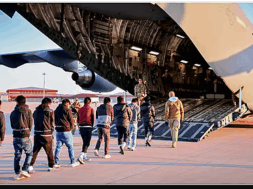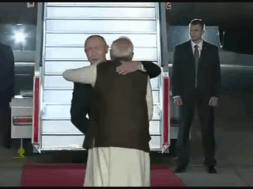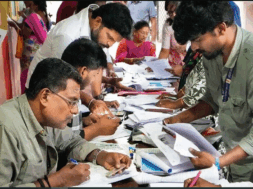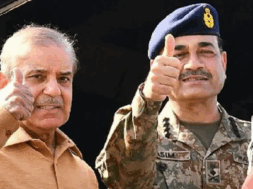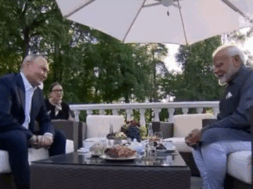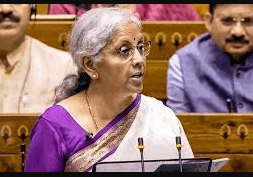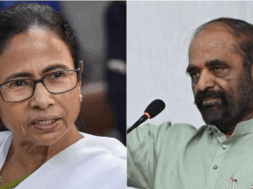
Manas Dasgupta
NEW DELHI, Oct 28: Enumeration for the much-delayed census, last held in 2011, is expected to be started next year to be followed by delimitation of the constituencies and roll out reservation for women to conduct the next Lok Sabha elections in 2029 under the new arrangement, official sources said on Monday.
The government, however, has no plans to go for caste census, sources said.
The last time census was recorded in India was 2011. The next round was to begin in 2021, but the second wave of Covid-19 delayed it. Since then, several questions have been asked about when the data of the next census will be published. The highly placed sources in the Union government on Monday confirmed that the next census data would be available in 2026. “The process of recording data will begin in 2025, and the report will be published in 2026,” the sources added.
The cycle of census would also be accordingly changed and instead of first year of a new decade, the cycle of would now be from 2025 to 2035 and then 2035 to 2045 and so on, sources added.
In 2002, the then NDA government led by Atal Bihari Vajpayee had delayed delimitation by 25 years via the 84th Amendment, saying this would be carried out only after “the relevant figures for the first Census taken after the year 2026 have been published”. This meant delimitation to be carried out after the 2031 Census. However, as per sources, the government now plans to begin the delimitation process by 2027 and finish it within a year, so that the next Lok Sabha elections (in 2029) can be done post-delimitation and after the implementation of women’s reservation Bill. Recently, the tenure of Mrityunjay Kumar Narayan as Registrar General and Census Commissioner of India was extended beyond this December till August 2026.
The preparations for the enumeration is learnt to be almost complete and sources said despite the demand from various political parties for undertaking caste census along with the population enumeration, the centre currently has no plans to go for caste census and instead might go for a questionnaire to ask the people whether census should be held on caste basis too.
The sources said there was no clarity on how to go about caste census. “There are suggestions such as adding the OBC category to the existing counts of Scheduled Castes, Scheduled tribes and religion, and including surveys of sub-sects within the general and SCs and ST categories.
Even in the existing form, where every person undertaking the survey publishes their name, details, family details etc, they have the option of filing details of religion. There is another column that identifies them as either Scheduled Tribe or Scheduled Caste (SC/ST). The only addition to the form will be to allow people undertaking the survey to mention their sect under their religion.
The Congress, RJD and several other parties have been demanding that a caste census be undertaken. BJP’s alliance partners such as JDU in Bihar have also spoken about the same, but have not put any pressure on the Centre. At the central level, the final decision has been left to Prime Minister Narendra Modi and his cabinet. BJP’s other ally, Telugu Desam Party, too is of the opinion that the census must happen, with Andhra Pradesh Chief Minister Chandrababu Naidu actively advocating for ‘skill census’ for the benefit of the masses, especially the young population.
The RSS too is in favour of caste census so long as it’s not being done for gaining political mileage by any party. Sources also said at the time of publishing the census data, the government would begin the process of delimitation. This will give the country more elected representatives in the coming years. Only after the process of delimitation is complete can the likes of women’s reservation of 33 per cent be implemented.
Delimitation of the constituencies based on the latest census would have its own share of problems, with the South worried about the impact on its political share in a Parliament where a disproportionate number of seats will be from the North due to its heavily populated states. Various state governments in the South including Andhra Pradesh and Tamil Nadu have raised this concern publicly.
Many states in the South, especially Tamil Nadu, have followed a strict population policy and therefore, the government is also considering a proposal to see that no unfair treatment is meted out to them via the delimitation process.
Sources in the government have said they are aware of the concern, and any measure that could “damage” southern states, which have “made remarkable progress in population control and other social developments”, would be avoided.
A senior Union minister said: “The Prime Minister has made it clear that the delimitation process should not wedge any divide between the North and South. Maybe fine-tuning or tweaking of population-area formulas could help. There will be discussions with all the stakeholders and a consensus will emerge.”
The amendments required for a delimitation process include changes to Article 81 (which defines the composition of the Lok Sabha), Article 170 (composition of Legislative Assemblies), Article 82, Article 55 (deals with the presidential election process for which value of each vote in the electoral college is decided on the population basis), Articles 330 and 332 (covering reservation of seats for the Lok Sabha and Legislative Assemblies, respectively).
The census of India is recorded every decade, with the first one being held in 1872. The first census post-Independence was recorded in 1951 and the last one in 2011.
The census data is extremely important for the government of India for its policy formulation and implementation, and ensuring equal distribution of resources in the country. The census throws light on multiple aspects, including population, demography, economic status etc. In the absence of census due to the coronavirus pandemic, the government of India is currently still relying on the census data of 2011.
According to the 2011 data, India’s population stood at 121.1 crore of which 52 per cent are males and 48 per cent are females. It was during this census that the transgender numbers were taken into account for the first time in India’s history. As per data, Uttar Pradesh is the most populous state with nearly 20 crore people and at number two on the list is Maharashtra with more than 11 crore people. At nearly six lakh, Sikkim had the lowest population. In the 2011 data, the literacy percentage in India stood at 74 per cent. The literacy in males was 82 per cent whereas female literacy numbers were at 65%.
The religious demographics of the country in the 2011 census showed Hindus at 79.8 per cent, Muslims at 14.23 per cent, Christians at 2.30 per cent and Sikhs at 1.72 per cent of India’s population. About 57,000 Parsis are also part of India’s population. During the survey, it was recorded that 0.24 per cent respondents registered themselves as having “no religion” — a category that was introduced for the first time in 2011.


